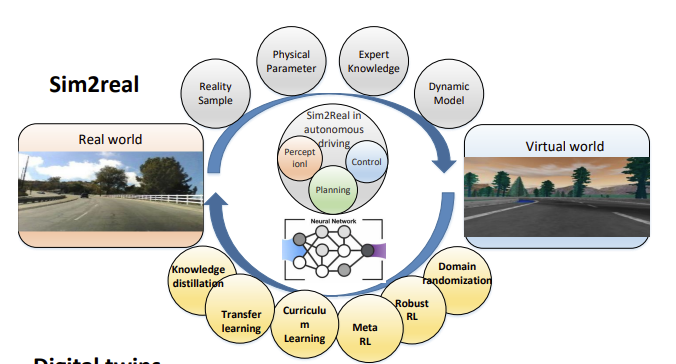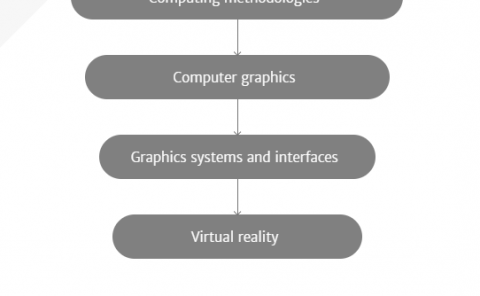Sim2real and Digital Twins in Autonomous Driving: A Survey
PubDate: May 2023
Teams: Hubei University;Worcester Polytechnic Institute;Chinese Academy of Sciences
Writers: Xuemin Hu, Shen Li, Tingyu Huang, Bo Tang, Long Chen
PDF: Sim2real and Digital Twins in Autonomous Driving: A Survey

Abstract
Safety and cost are two important concerns for the development of autonomous driving technologies. From the academic research to commercial applications of autonomous driving vehicles, sufficient simulation and real world testing are required. In general, a large scale of testing in simulation environment is conducted and then the learned driving knowledge is transferred to the real world, so how to adapt driving knowledge learned in simulation to reality becomes a critical issue. However, the virtual simulation world differs from the real world in many aspects such as lighting, textures, vehicle dynamics, and agents’ behaviors, etc., which makes it difficult to bridge the gap between the virtual and real worlds. This gap is commonly referred to as the reality gap (RG). In recent years, researchers have explored various approaches to address the reality gap issue, which can be broadly classified into two categories: transferring knowledge from simulation to reality (sim2real) and learning in digital twins (DTs). In this paper, we consider the solutions through the sim2real and DTs technologies, and review important applications and innovations in the field of autonomous driving. Meanwhile, we show the state-of-the-arts from the views of algorithms, models, and simulators, and elaborate the development process from sim2real to DTs. The presentation also illustrates the far-reaching effects of the development of sim2real and DTs in autonomous driving.



